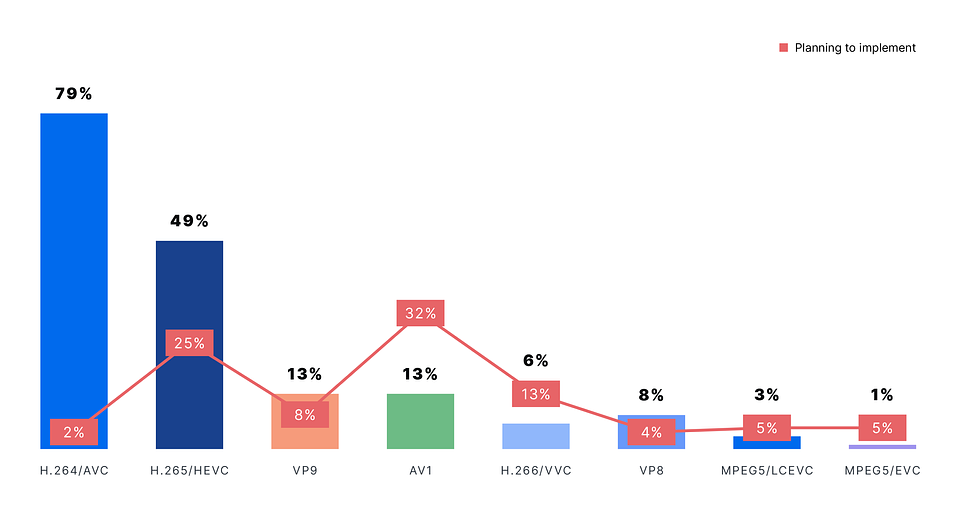Report: Ad insertion tops streaming challenges
February 13, 2025

Bitmovin’s latest Video Developer Report indicates an increasing role of AI, the slow adoption of next-generation codecs, and continuing challenges when it comes to ad insertion. It also demonstrates a disconnect between sustainability efforts and cost implications
Key Challenges and Opportunities from the Report
This year’s Video Developer Report saw advertising (15 per cent) remain the top opportunity for innovation. However, ad insertion also remained the top challenge, cited by 38 per cent of respondents. The research also showed that the number of respondents using the advertising/AVoD business model has grown to 69 per cent, up from 56 per cent. Additionally, the number of respondents using the FAST business model is 46 per cent, up from 39 per cent.
Regarding advertising technologies, Client-Side Ad Insertion just merged as the top choice, cited by 64 per cent of respondents. Server-Side Ad Insertion is a close second and used by 63 per cent of respondents. Dynamic Ad Insertion was the third favorite (25 per cent) and Server-Guided Ad Insertion was fourth (21 per cent).
The second biggest challenge for respondents remains controlling costs (31 per cent) which reflects the ongoing macroeconomic conditions; the third challenge is playback on all devices (29 per cent).
“Since our first report in 2017, the streaming industry has undergone a massive transformation. This year’s findings show the industry’s continued focus on being able to monetise content effectively to support growth,” said Stefan Lederer, CEO and co-founder of Bitmovin, “However, the fact that ad insertion is the top challenge for the industry reflects the ongoing technical challenges with ad insertion. The industry needs to solve them if it wants to maximise the benefits of ad-based revenue models.
A Mixed Response to Machine Learning (ML) and Artificial Intelligence (AI)
ML and AI is the driving force behind a number of innovations in the media and entertainment technology industry. Almost a third (28 per cent) stated that audio transcription and speech-to-text are where they will be using AI tools to improve customer experiences. This is followed by tagging and categorising video (13 per cent) and personalisation (8 per cent). However, the number of respondents saying they have no plans to use ML and AI is 9 per cent, up from 6 per cent.
Sustainability vs Cost Pressures
The findings from the report present a clear tension between company’s understanding of the importance of sustainability and economic realities. 70 per cent of respondents indicated that sustainability is not a business priority due to cost concerns, this is up from 40 per cent. On the other hand, almost a third of respondents (28 per cent) said that sustainability is a high priority even if it means paying a little more, while 2 per cent stated green streaming a top priority, regardless of costs compared to 6 per cent previously.
Lederer added: “ML and AI, and sustainability have been huge topics in video streaming over the past couple of years. However, while ML and AI has translated into innovations and adoption, sustainability seems to be falling down the industry’s agenda. It’s disappointing, but it also reflects the economic landscape we’re operating in where companies are focusing on topics like monetisation and ML and AI, which they believe will positively impact their bottom line.”
Slow but Steady Adoption of Next-Gen Codecs
H.264/AVC remains the dominant codec (80 per cent), followed by H.265/HEVC (49 per cent), and VP9 (13 per cent) and AV1 (13 per cent). AV1 is the top codec for planned adoption in the coming 12 months (32 per cent) but the findings reflect there’s a general lag between the industry’s plans and the implementation.

Other posts by :
- Rivada Space Networks wins spectrum dispute
- Eutelsat shareholders upset over Rights Issue
- Amazon Leo satellites en route to French Guiana
- Deutsche Bank reveals targets for AST SpaceMobile
- AST SpaceMobile boss outlines benefits
- Report: LEO build-out accelerates
- Germany outlines space commitment
- Analysis: Impact of AT&T on US telcos and cable
